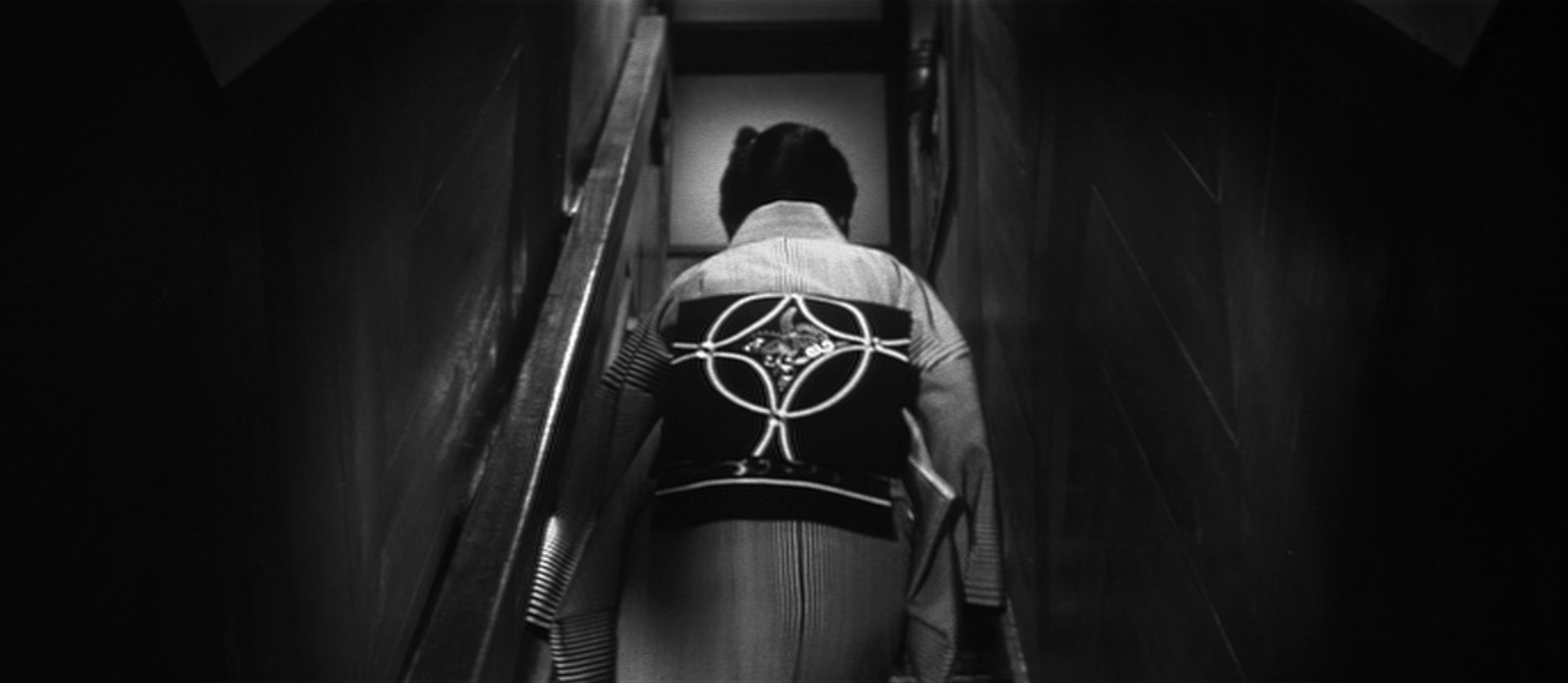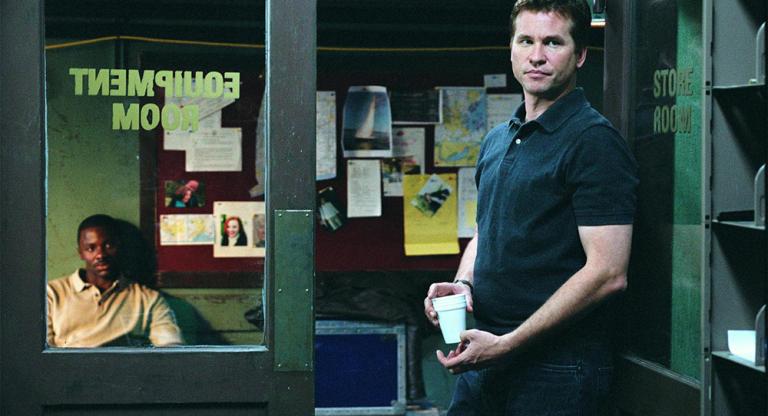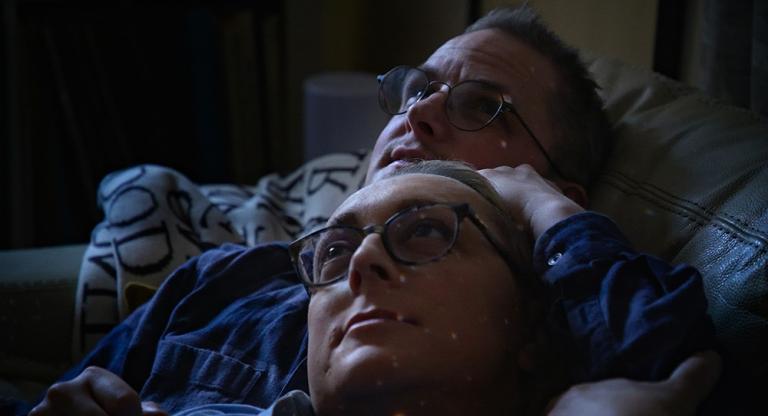One of the descriptions that seems to follow wherever the name of Mikio Naruse is mentioned is that, after Akira Kurosawa, Yasujirō Ozu, and Kenji Mizoguchi, he is the “fourth great” master of Japanese classical cinema. As far as I can tell, this description originates from the program notes for the first traveling U.S. retrospective of Naruse’s films in 1984, and has remained influential enough that it reappeared in the notes for the series devoted to the director at Japan Society in New York earlier in May, which kicked off a new U.S. tour this year.
I’ve always found this description to be a bit of a backhanded compliment, and we would probably do best to follow the advice of Shiguéhiko Hasumi and Sado Yamane—editors of the festival catalogue for the 1998 Naruse retrospective at the San Sebastián Film Festival—to avoid this kind of ranking altogether. But, in part, what it signals is the fact that Naruse’s reputation as an auteur in the West has tended to lag behind the other three big names of his generation. For many, he still remains to be discovered. Until recently, his reputation rested primarily on the strength of the greatness of individual works—above all, Floating Clouds (1955), his undisputed masterpiece about a couple locked in amour fou following the Japanese defeat in WWII—rather than on the themes and concerns that give shape to an oeuvre almost forty years in length.
If I’m optimistic that the current travelling retrospective, which opens at BAMPFA on July 3 and continues into December, is likely to further cement Naruse’s place firmly in the latter camp, it owes to a few developments. At least three monographs—Catherine Russell’s The Cinema of Naruse Mikio: Women and Japanese Modernity (2008) and Dan Sallitt’s A Mikio Naruse Companion: Notes on the Extant Films, 1931-1967 (2016; available in blog form here) in English, as well as Jean Narboni’s Mikio Naruse: Les Temps Incertains (2006) in French—have been published since the archive’s last retrospective of the director in 2006. His work is regularly esteemed by contemporary filmmakers as varied as Ryusuke Hamaguchi and Rita Azevedo Gomes. Among certain circles of online cinephiles, whose tastes tend to champion underdogs over established names, Naruse is granted more and more a place of importance.
Naruse began his career at Shochiku but left for PCL (merged soon after to form Toho) in 1934 after being compared unfavorably to Ozu by the head of the studio. Wife! Be Like a Rose! (1935), his second sound feature and first to top the Kinema Junpo annual list of best films, was also one of the first Japanese films to get a stateside release—a rare exception to the isolationism of the Japanese film industry until the early ‘50s—where it received a lukewarm reception by American critics, including famed documentarian Pare Lorentz. With the benefit of hindsight, we can conclusively say that these critics were wrong: there are few films from the ‘30s in any genre or from any country better than Wife! Be Like a Rose!, and almost none are more original. Here is a film with a fully worked-out idea of how to use the camera subjectively, years before filmmakers like Alfred Hitchcock, Joseph L. Mankiewicz, and Otto Preminger popularized such an approach. Its non-linear structure and use of first-person camera, both easy to take for granted today, is completely avant-garde in the context of the ‘30s. At a time when nearly all films stressed surface appearances, Naruse is already turning the camera inward, plumbing the psychological depths of his characters. Though most of the attention on Naruse’s work is focused on his later melodramas, these early features—both Wife! and the lyrical Three Girls with Maiden Hearts (1935), his first sound feature—are not to be missed.
Fortunate enough to avoid conscription in the Japanese army, unlike others of his generation including Ozu (drafted twice between 1937 and 1943) and Sadao Yamanaka (drafted 1937, died of dysentery in Manchuria in 1938), Naruse was able to work steadily in the late ‘30s and into the ‘40s. It was in this period that he first tried to adapt a story by Fumiko Hayashi, although it wouldn’t be until Repast (1951) that he succeeded in bringing one of her novels to the screen. Credited by the filmmaker with reviving him from the “slump” he found himself in at the start of the ‘50s, Repast inaugurates what is today the most celebrated period in Naruse’s career, a legendary run of films lasting nearly 20 years until his death. He would go on to direct five more adaptations of Hayashi, including Floating Clouds, as well as a biographical film about her life, A Wanderer’s Notebook (1962).
“Naruse was a modern without intending or realizing it,” claimed the French critic Jean Douchet, who considered him as important as Roberto Rossellini for the cinema of the mid-century. (If this pairing seems unusual, it may be helpful to know that Naruse’s 1952 film Mother was described by André Bazin and other French critics as a neorealist work when it was released in France.) It should be remembered that Floating Clouds was released the same year that Alain Resnais completed Night and Fog (1955), another bitter portrait of the responsibility of one’s home country in the war. Despite all the differences in their technical execution, both are experiments in how to apply the theory of montage to historical memory and use it to resurrect the past out of images of the present. The late Japanese filmmaker Yoshishige Yoshida once argued that the compulsive need of Naruse’s characters to repeat the past was key to his understanding of the irrationalism in the Japanese national psyche after WWII. One can feel the influence of Floating Clouds on the oblique, elliptical narrative structure of Yoshida’s early masterpiece, Akitsu Springs (1962), and its star, the great Mariko Okada—later Yoshida’s wife and muse—also appears in a minor role in Naruse’s film, having begun her career in his Dancing Girl (1951).
One of the points of interest in Naruse’s films, regardless of when and where they’re set, is always thoughts, dreams, and memories. Though not a chronicler of his generation the way Ozu was, Naruse’s characters are constantly working over their past. Few are the filmmakers who have had so much to say about what his characters are thinking, and who have tried so many different strategies for expressing it on screen. One of his only rivals in this field is Hitchcock, and a comparison between them might be instructive. Both men were at their most prolific in the ‘50s, with Naruse releasing two or sometimes even three films a year. Both tended to stick to their genres of choice—for Hitchcock, the thriller or detective film and for Naruse, the melodrama—using these small corners to carry out profound experiments. And both disguised their highly subjective and psychological conceits behind apparently objective presentations.
Consider as an example Naruse’s final film, the masterful Scattered Clouds (1967), about the relationship that forms between a woman and the man responsible for the accident that killed her husband. Seldom a showy director, the simplicity of Naruse’s films is deceptive. But note how the more the wife becomes estranged from society, the more the structure of the film is informed by her paranoia and sense of shame—for instance, in the scene in the taxi late in the film, where the driver’s eye-line is made out to be implausibly sinister. One viewing is not enough: it takes two, three, even four screenings to notice all of the repetitions of situations or frames as they’re filtered through the mind of its protagonist, and to make all of the connections between the scenes. We should hope, with the success of these retrospectives, to have many more opportunities to do so.
Mikio Naruse: The Auteur as Salaryman runs July 3 - December 21 at BAMPFA.



